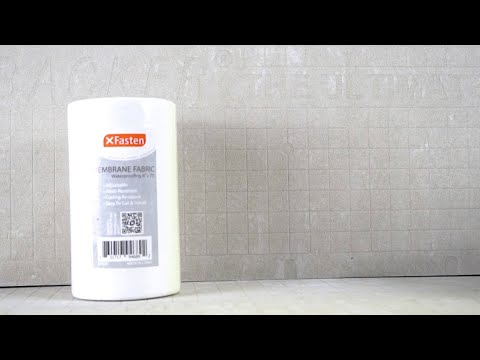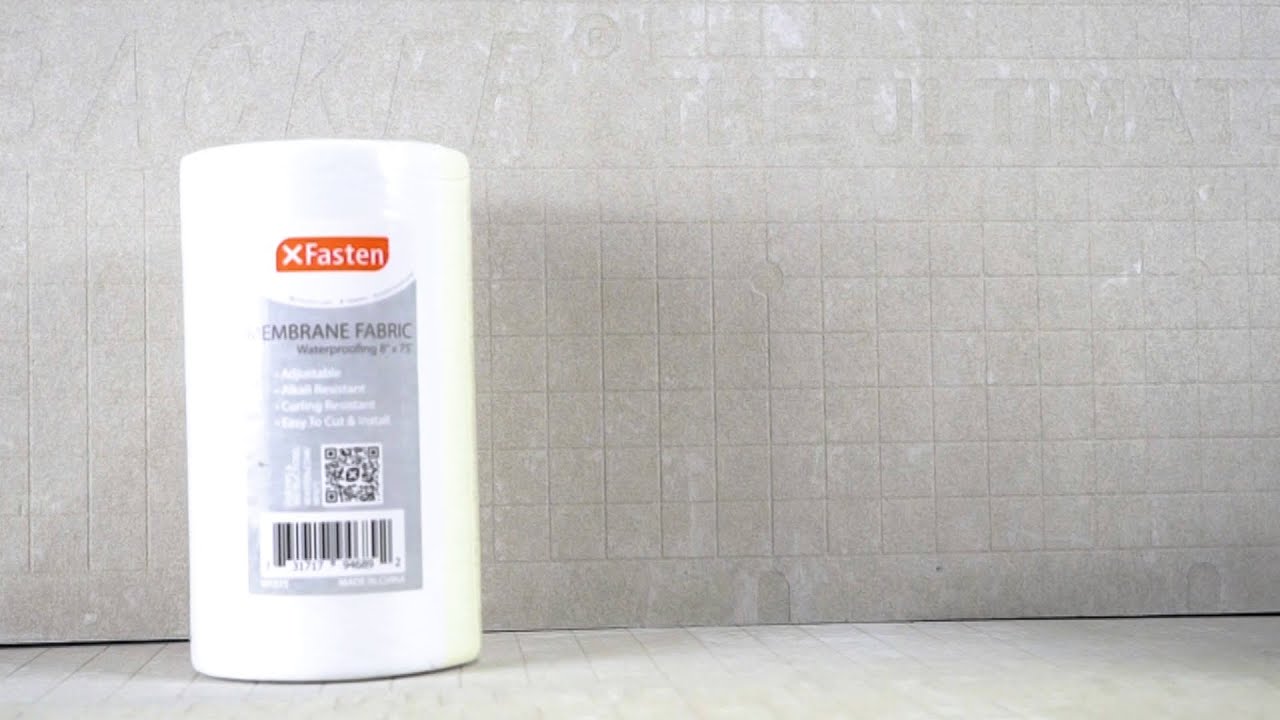Waterproofing membrane fabric is a revolutionary material that offers unparalleled protection against moisture and water damage. Designed with advanced technology and innovation, this fabric is engineered to keep your belongings and structures completely dry and safe. Whether you need to waterproof your roof, basement, or any other vulnerable area, this extraordinary fabric is your ultimate solution. With its impermeable and durable properties, this membrane effectively shields against water infiltration, preventing leaks and potential structural damage.
The versatility of this waterproofing membrane fabric is truly remarkable. It can be used in various applications such as construction, landscaping, and even fashion. Its flexible nature allows it to conform perfectly to any surface, ensuring a seamless and water-resistant barrier. This fabric’s resilience and long-lasting performance make it a cost-effective choice for both residential and commercial projects.
In addition to its exceptional waterproofing capabilities, this fabric is also breathable, allowing moisture vapor to escape while keeping water out. It effectively regulates humidity levels, preventing the growth of mold and mildew. This feature is particularly beneficial for areas prone to high humidity or heavy rainfall.
Investing in this innovative waterproofing membrane fabric not only safeguards your property but also provides peace of mind. Its superior quality and performance ensure that your belongings and structures remain dry and protected, even in the harshest weather conditions. Don’t let water damage be a constant worry – choose this exceptional fabric and experience the ultimate in waterproofing technology.

The Benefits of Waterproofing Membrane Fabric
Waterproofing membrane fabric is a specialized material that is designed to prevent the penetration of water. It is commonly used in a variety of applications, from clothing and outdoor gear to construction and roofing. This article will explore the many benefits of waterproofing membrane fabric and why it is an essential component in many industries.
1. Protection from the Elements
One of the primary advantages of waterproofing membrane fabric is its ability to provide protection from the elements. Whether you are out hiking in the rain or working on a construction site in wet conditions, this fabric can keep you dry and comfortable. Its waterproof nature ensures that water cannot penetrate through, keeping you protected from moisture and the potential for hypothermia.
Additionally, waterproofing membrane fabric can also provide protection from wind and cold temperatures. The fabric acts as a barrier, preventing any wind from cutting through and maintaining your body heat. This is particularly important in extreme weather conditions, where exposure to the elements can be dangerous.
2. Enhanced Durability
Another benefit of waterproofing membrane fabric is its enhanced durability. The fabric is designed to withstand harsh conditions and remain intact, ensuring its longevity. This is especially crucial in outdoor gear and clothing, where wear and tear are common.
The fabric’s durability is achieved through a combination of factors. Its tight weave and high-quality materials make it resistant to tears and punctures. Additionally, the fabric is often treated with special coatings that further enhance its strength and resilience.
By investing in waterproofing membrane fabric, you can enjoy long-lasting products that will withstand the test of time.
3. Breathability for Comfort
While waterproofing is crucial, it is equally important for the fabric to be breathable. This allows moisture and sweat from the body to escape, preventing a buildup of heat and discomfort. Waterproofing membrane fabric is designed with breathability in mind, ensuring that you remain dry and comfortable even during physical activity.
This breathability is achieved through the use of innovative technologies. The fabric is often engineered with microscopic pores that allow air molecules to pass through while blocking water molecules. This allows for efficient moisture management, keeping you cool and dry throughout the day.
4. Versatility in Applications
Waterproofing membrane fabric is incredibly versatile and can be used in a wide range of applications. In the world of fashion and outdoor gear, it is commonly used for raincoats, jackets, and hiking boots. Its ability to repel water ensures that you stay dry and comfortable, no matter the conditions.
Furthermore, waterproofing membrane fabric is also extensively used in the construction and roofing industries. It acts as a protective barrier, preventing water from seeping into buildings and causing damage. This is particularly crucial in areas that experience heavy rainfall or have flat roofs that are prone to pooling water.
5. Environmentally Friendly Options
As environmental consciousness continues to grow, many manufacturers are now offering waterproofing membrane fabric that is environmentally friendly. These fabrics are often made from recycled materials or are produced using sustainable manufacturing processes.
By opting for environmentally friendly options, you can reduce your carbon footprint and contribute to a more sustainable future. Additionally, these fabrics still offer the same level of protection and durability as traditional waterproofing membrane fabric.
Conclusion
Waterproofing membrane fabric is a versatile and essential material that provides numerous benefits. From protection from the elements to enhanced durability and breathability, this fabric is a game-changer in various industries. Its versatility allows it to be used in fashion, outdoor gear, construction, and roofing, making it a valuable component in many different applications. Consider investing in waterproofing membrane fabric to enjoy its many advantages and ensure that you stay dry and comfortable, no matter the conditions.
Installing Waterproofing Membrane Fabric: A Quick and Easy Guide
List of Waterproofing Membrane Fabric
Waterproofing Membrane Fabric
| Fabric Type | Composition | Features | Applications |
|---|---|---|---|
| Polyurethane (PU) | Consists of a polyurethane layer bonded to a fabric substrate, usually polyester or nylon. | – Excellent waterproofing capabilities – High flexibility and elongation properties – Resistant to UV radiation and aging – Breathable, allowing moisture vapor to escape – Durable and tear-resistant |
– Roofing systems – Building foundations – Tunnels and underground structures – Green roofs and garden terraces |
| Ethylene Propylene Diene Monomer (EPDM) | Made from synthetic rubber, specifically EPDM, a highly stable and durable material. | – Exceptional resistance against weathering and ozone exposure – Highly flexible, even at low temperatures – Excellent elongation and tensile strength – Resistant to a wide range of chemicals and acids – Minimal maintenance required |
– Flat roofs and terraces – Pond liners – Below-grade waterproofing – Planters and green spaces |
| Polyvinyl Chloride (PVC) | Constructed from PVC resin, plasticizers, and stabilizers to enhance its properties. | – Superior resistance to fire, chemicals, and UV radiation – Excellent dimensional stability – Low water absorption – Easy to install and maintain – Wide range of color options |
– Swimming pools and water tanks – Balconies and terraces – Industrial roofs and facades – Landfill liners |
As an expert in waterproofing membrane fabrics, it is crucial to understand their characteristics and applications. The table above provides a brief overview of three commonly used fabric types: Polyurethane (PU), Ethylene Propylene Diene Monomer (EPDM), and Polyvinyl Chloride (PVC).
Polyurethane (PU) fabric is widely known for its exceptional waterproofing capabilities. With a polyurethane layer bonded to a polyester or nylon substrate, it offers high flexibility, UV resistance, and breathability. This fabric is commonly utilized in roofing systems, building foundations, tunnels, and green roofs.
EPDM fabric, composed of synthetic rubber, exhibits outstanding weathering resistance and flexibility even at low temperatures. Its excellent elongation and tensile strength make it suitable for flat roofs, pond liners, below-grade waterproofing, and planters.
PVC fabric, constructed from PVC resin, plasticizers, and stabilizers, offers superior fire, chemical, and UV resistance. It demonstrates excellent dimensional stability and low water absorption, making it ideal for swimming pools, balconies, industrial roofs, and landfill liners.
Understanding the unique features and applications of these waterproofing membrane fabrics is essential for making informed decisions in various construction and waterproofing projects.

